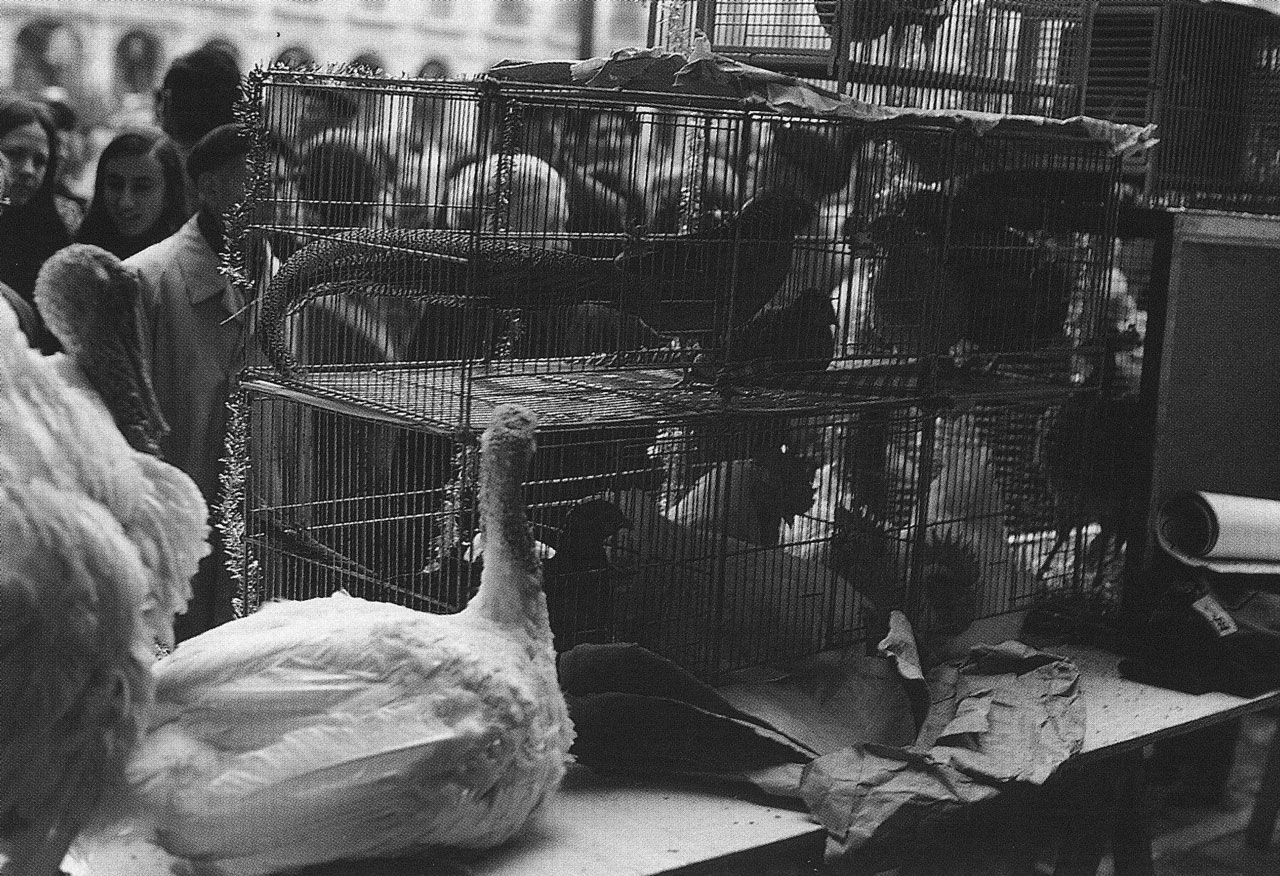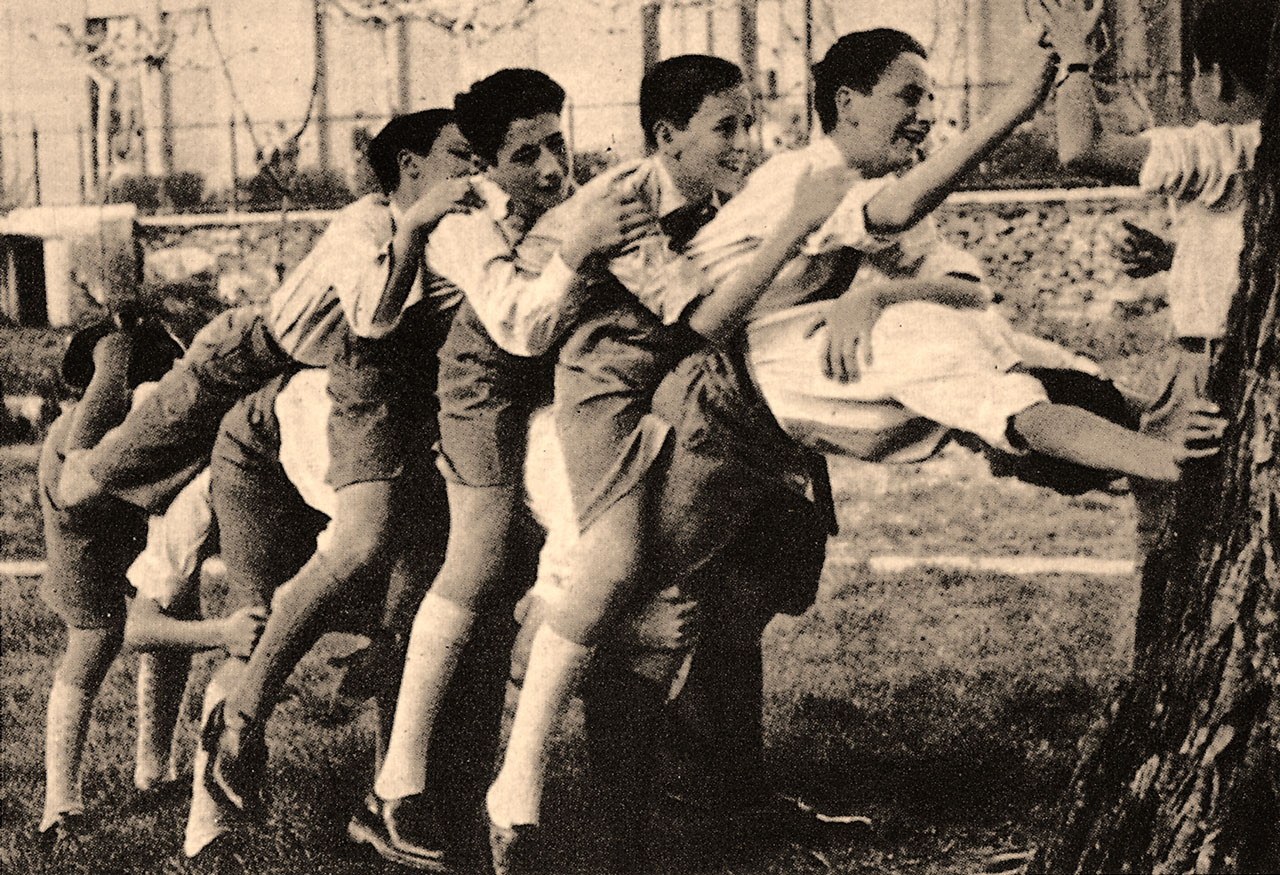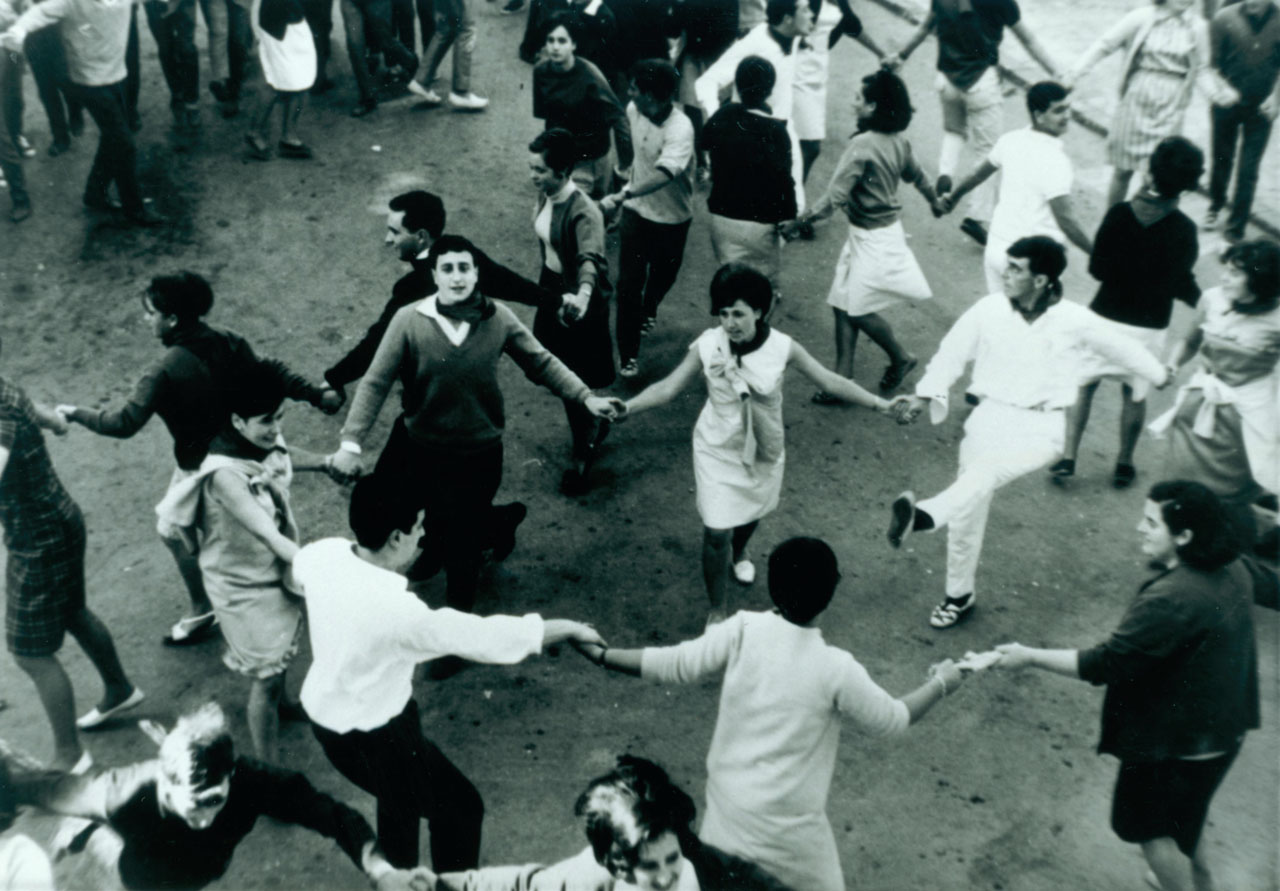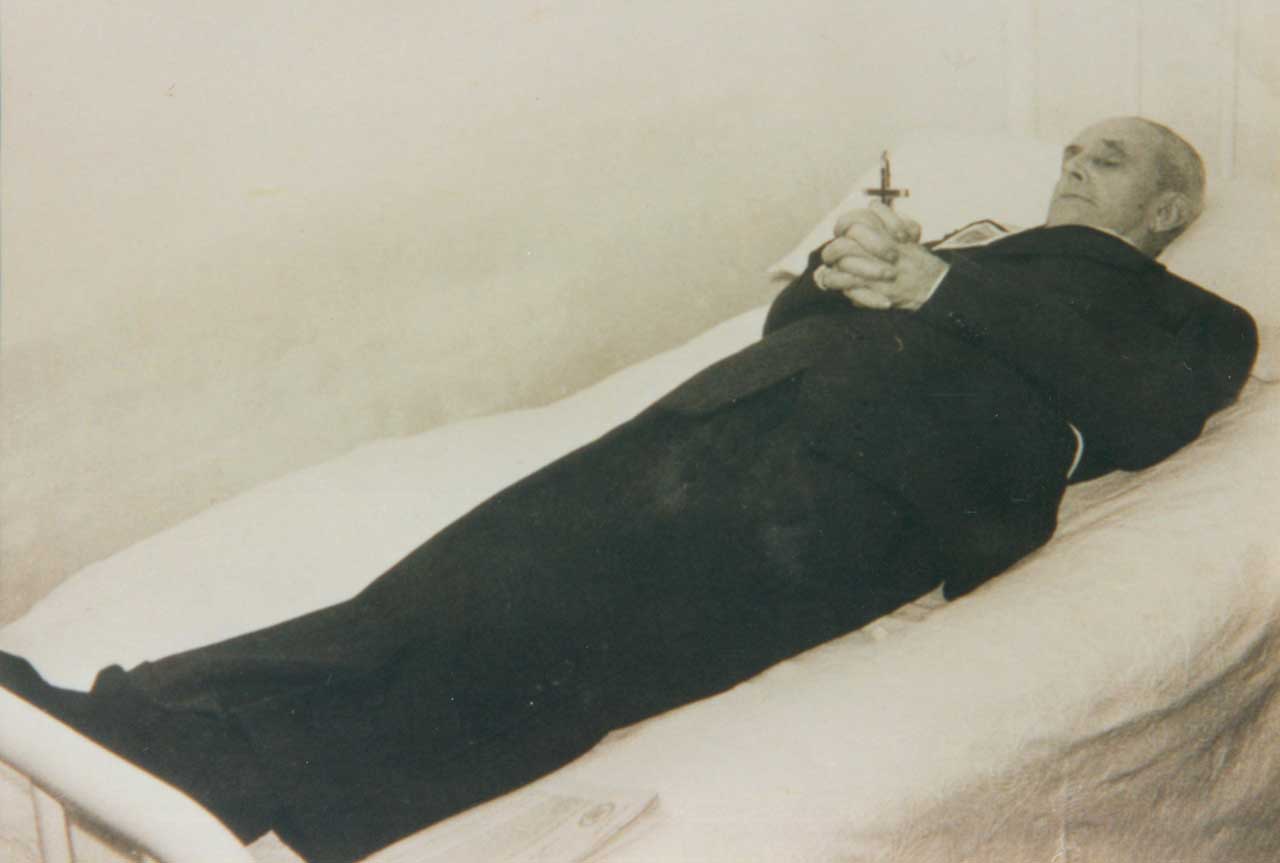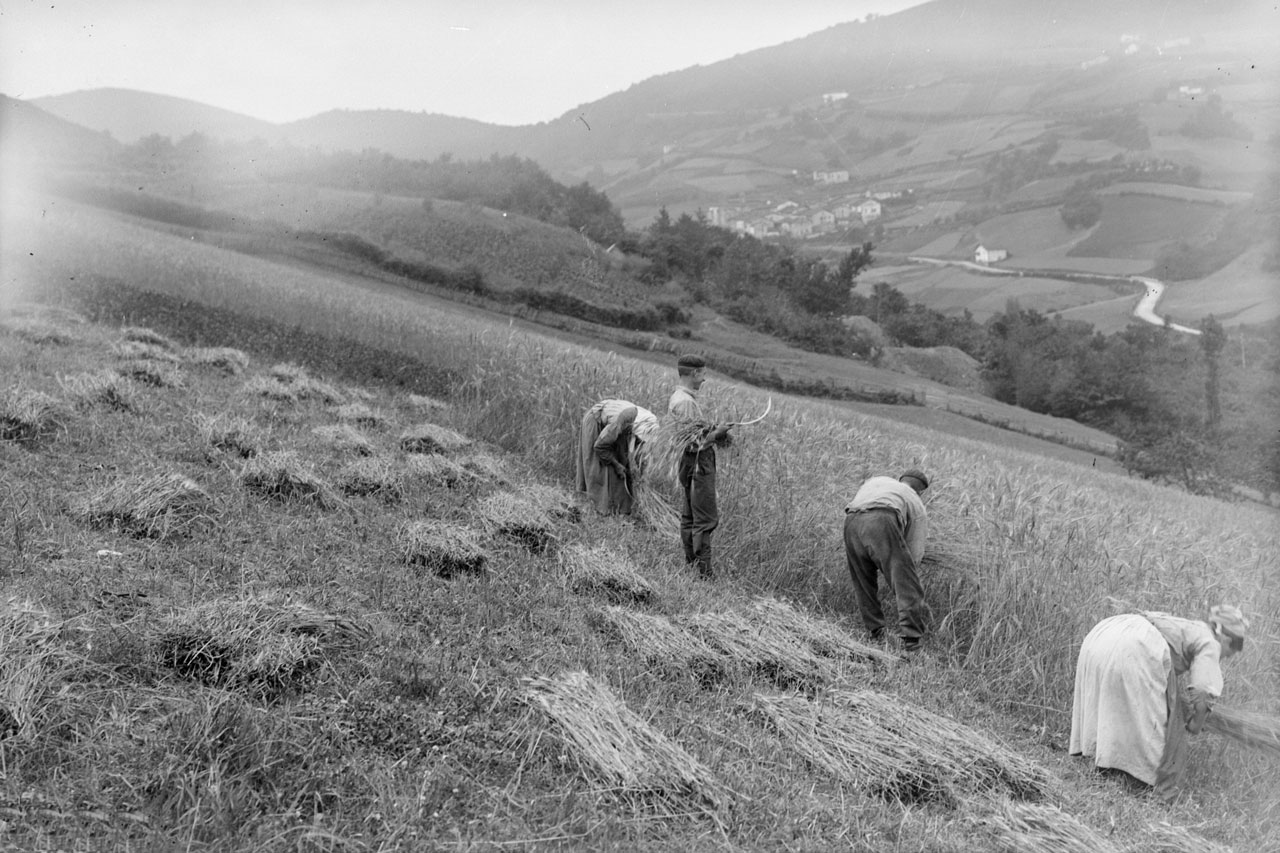Diferencia entre revisiones de «Main Page/en»
De Atlas Etnográfico de Vasconia
| Línea 52: | Línea 52: | ||
====[/atlas/casa/Senar-emazte-zaharrak-eta-gazteak-matrimonios-mayor-y-joven-Areatza-principios-del-siglo-20.jpg|Old and young husband and wife. Areatza (B), beginning of the 20th century. Source: Rubén de Las Hayas’ private archive.|The aim was to ensure that the family wealth, taken to be the farmstead and its belongings, would be passed on in full or only slightly diminished, and improved if possible, from parents to their offspring.||ENLACE]==== | ====[/atlas/casa/Senar-emazte-zaharrak-eta-gazteak-matrimonios-mayor-y-joven-Areatza-principios-del-siglo-20.jpg|Old and young husband and wife. Areatza (B), beginning of the 20th century. Source: Rubén de Las Hayas’ private archive.|The aim was to ensure that the family wealth, taken to be the farmstead and its belongings, would be passed on in full or only slightly diminished, and improved if possible, from parents to their offspring.||ENLACE]==== | ||
| − | ===[alimentacion| | + | ===[alimentacion|Family Diet in the Basque Country|/atlas/alimentacion.png|Food and eating habits in the family, ritual meals, celebrations and lifestyles.]=== |
| − | ====[Alimentacion_domestica_en_vasconia | | + | ====[Alimentacion_domestica_en_vasconia | Family Diet in the Basque Country]==== |
| − | ====[/atlas/alimentacion/Odol-usten.jpg| | + | ====[/atlas/alimentacion/Odol-usten.jpg|Pig bleeding. Source: José Zufiaurre, Etniker Euskalerria Groups.|''Odolosteak ordeaz.''<br /><br /> Neighbours and relatives are given black puddings and other pork cuts as a gift at pig slaughter time. It is an act of courtesy, an expression of the close bond shared with them, and part of an established exchange ritual.|]==== |
| − | ====[/atlas/alimentacion/Erraria-hornada-de-pan-Caserio-Ariztimuno-Onati-1995.jpg| | + | ====[/atlas/alimentacion/Erraria-hornada-de-pan-Caserio-Ariztimuno-Onati-1995.jpg|Bread baking. Ariztimuño Farmhouse. Oñati (G), 1955. Source: Antxon Aguirre, Etniker Euskalerria Groups.|Ogi erre berri, etxe galgarri. <br />''Soft bread at home, an unruly household.''|]==== |
| − | ====[/atlas/alimentacion/Labartoa.jpg| | + | ====[/atlas/alimentacion/Labartoa.jpg|Bushel of maize grain. Source: Ander Manterola, Etniker Euskalerria Groups.|Maize, introduced in the 17th century, and potatoes, in the 19th, would revolutionise the Basque diet.|]==== |
====[/atlas/alimentacion/Dando-brillo-al-pan.jpg|Dando brillo al pan. Fuente: Ander Manterola, Grupos Etniker Euskalerria.|Nolako irina, halako ogia. | ====[/atlas/alimentacion/Dando-brillo-al-pan.jpg|Dando brillo al pan. Fuente: Ander Manterola, Grupos Etniker Euskalerria.|Nolako irina, halako ogia. | ||
Revisión del 12:30 27 ene 2020
Grandmother and grandchildren. Urduliz (B), 2011. Source: Akaitze Kamiruaga, Etniker Euskalerria Groups.
House and Family in the Basque Country


House and Family in the Basque Country
The traditional Basque family is noted for a type of clearly defined feminism, which can be seen from the application of the right of the first-born to inherit regardless of their sex, the common ownership of property brought to the marriage by the spouses, their equal standing in civil law, and the woman’s status as the head of the household in the domestic religious life, the cultural rites of the home, of the church and of the family burial ground.
Family Diet in the Basque Country


Family Diet in the Basque Country
Aza-olioak pil-pil, bisigua zirt-zart, gaztaina erreak pin-pan, ahia goxo-goxo, epel-epel. Canción tradicional de Nochebuena
A chorro-morro. Fuente: Iñigo Irigoyen, José. Folklore Alavés. Vitoria-Gasteiz: Diputación Foral de Álava, 1949.
Juegos infantiles en Vasconia


Juegos infantiles en Vasconia
Astoka Uno o varios participantes se agachan adoptando una postura que generalmente se llama de ‘burro’ y los demás saltan sobre ellos o pasan por encima.
Medicina popular en Vasconia


Medicina popular en Vasconia
Eros ogi eta gazta, erremediotan ez gasta. Mejor gastar en comida que en curar herida.
Ritos del nacimiento al matrimonio en Vasconia


Ritos del nacimiento al matrimonio en Vasconia
Gazteak, badakizue zelan dantzan egin: burua gora-gora ta kaderai eragin. Copla antigua
Ritos funerarios en Vasconia


Ritos funerarios en Vasconia
Un grupo reducido de vecinos velaba por turnos el cadáver durante las horas nocturnas cuidando de que no se apagara la lámpara que ardía junto a él.
Ganaderia y pastoreo en Vasconia


Ganaderia y pastoreo en Vasconia
A finales de la Edad Media los rebaños de los valles vascos confluían a las mismas montañas que en nuestros días constituyen los principales puntos de concentración pastoril veraniega.
Agricultura en Vasconia


Agricultura en Vasconia
Satsitu ta jorratu ta garia hartu. Estercolar y escardar y recoger trigo.

